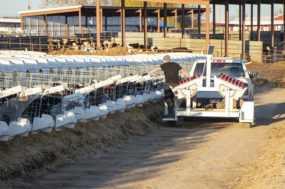A complicated plan to be considered in the U.S. House of Representatives this week would temporarily continue federal program funding levels and also extend the 2018 Farm Bill into 2024.
Congress approved a continuing resolution on Sept. 30, extending federal funding until Nov. 17. Under a plan released on Nov. 11, by House Speaker Mike Johnson (R-Louisiana), funding for some agencies – including agriculture – would be extended until Jan. 19, with others extended until Feb. 2.
The House Committee on Rules was scheduled to consider the proposal on Nov. 13, 4 p.m. (Eastern time). The full House could potentially consider the measure as early as Nov. 14, in an attempt to avert a potential government shutdown on Nov. 17.
Over the weekend, the four leaders of the House and Senate Agriculture Committees agreed to a provision that extends the 2018 Farm Bill, pushing creation of the 2023 Farm Bill into next year. Senate Ag Committee leaders U.S. Sens. Debbie Stabenow (D-Michigan), chair; and John Boozman (R-Arkansas), ranking member; and House Ag Committee leaders Reps. Glenn Thompson (R-Pennsylvania), chair; and David Scott (D-Georgia), ranking member, issued a joint statement on a farm bill extension, Nov. 12:
“As negotiations on funding the government progress, we were able to come together to avoid a lapse in funding for critical agricultural programs and provide certainty to producers. This extension is in no way a substitute for passing a five-year farm bill, and we remain committed to working together to get it done next year.”
In his weekly update released on Nov. 10, National Milk Producers Federation (NMPF) President and CEO Jim Mulhern said House and Senate ag panel leaders are focused on passing a 10-month extension of the 2018 Farm Bill, effective until October 2024. Parts of the current farm bill expired Sept. 30, with a larger number of farm safety net programs set to expire as of Jan. 1, 2024.
Last August, the Congregational Research Service summarized the impact of expiration of farm bills on various USDA programs. That report identifies a “dairy cliff,” reverting some dairy policies back to “permanent law” established in 1938.
Supplemental DMC affected
According to Alan Bjerga, NMPF executive vice president, communications and industry relations, the proposed 2018 Farm Bill extension also folds the Supplemental Dairy Margin Coverage (DMC) program into the regular DMC program, “so it would be mainstreamed into the farm bill from here on out.”
Separate from the 2018 Farm Bill, the Supplemental DMC was approved in a COVID-19 relief bill in December 2019.
While the original DMC program established an eligible baseline on milk marketings in years 2011, 2012 and 2013, the Supplemental DMC was directed at small-sized and midsized dairy producers, allowing them to adjust milk production history baselines to use actual 2019 milk marketing, enrolling supplemental pounds up to a maximum of 5 million pounds.
The program limited payments under Supplemental DMC to cover 75% of the difference between an eligible dairy operation’s actual 2019 milk marketings and its previous DMC milk marketing history. As with the regular DMC program, Supplemental DMC indemnity payments are subject to a 5.7% sequestration deduction.
As originally created, the Supplemental DMC program was effective retroactive to January 2021 and included 2022 and 2023 DMC coverage years. The program was scheduled to run through the life of the 2018 Farm Bill, expiring on Dec. 31, 2023. The Supplemental DMC provision was funded at $580 million for the three years, 2021-23.
While DMC indemnity payment distribution is updated monthly, distribution of payments through the Supplemental DMC program is not. Progressive Dairy is awaiting response to a Freedom of Information Act (FOIA) request to estimate those payments through January-September 2023.







